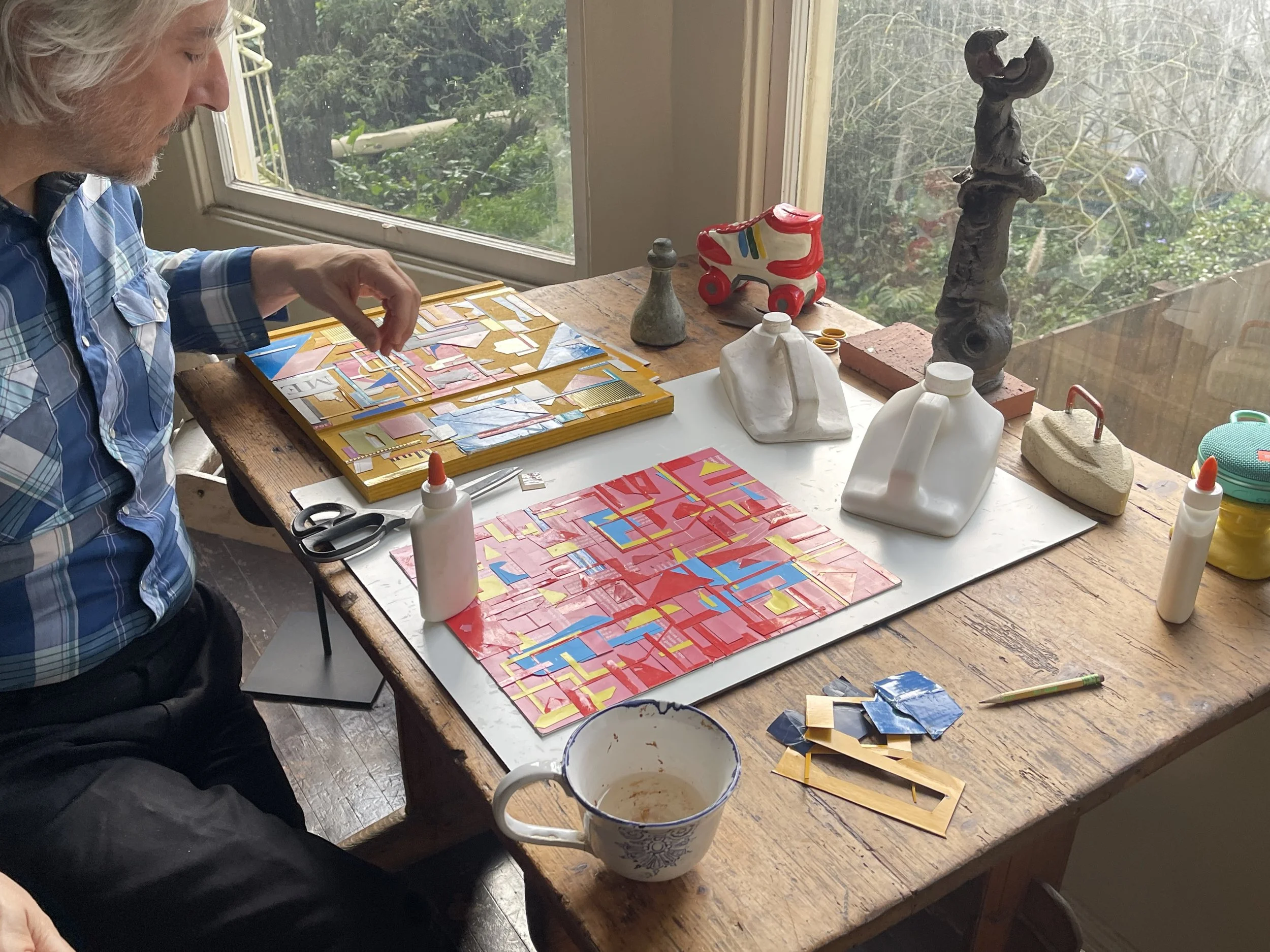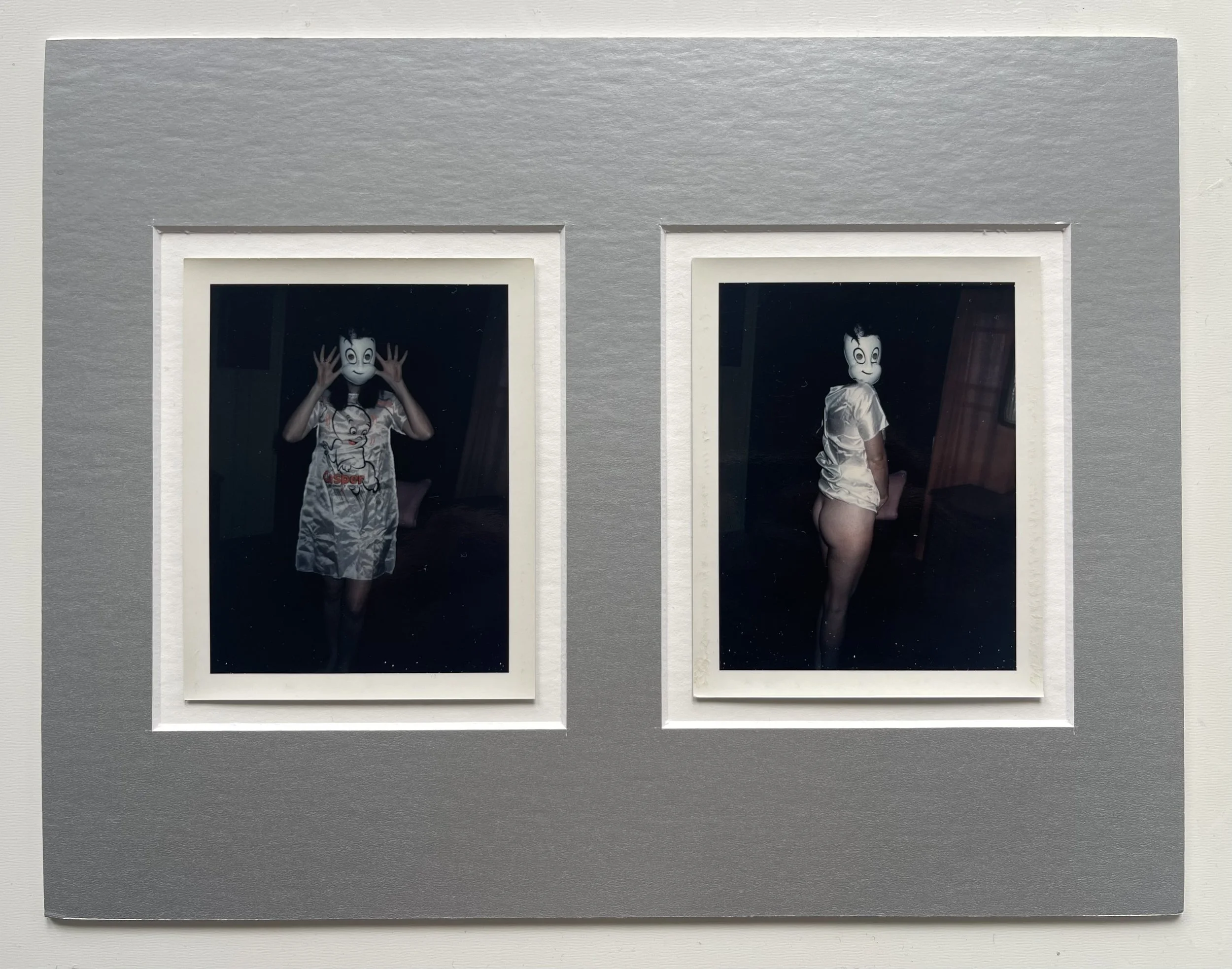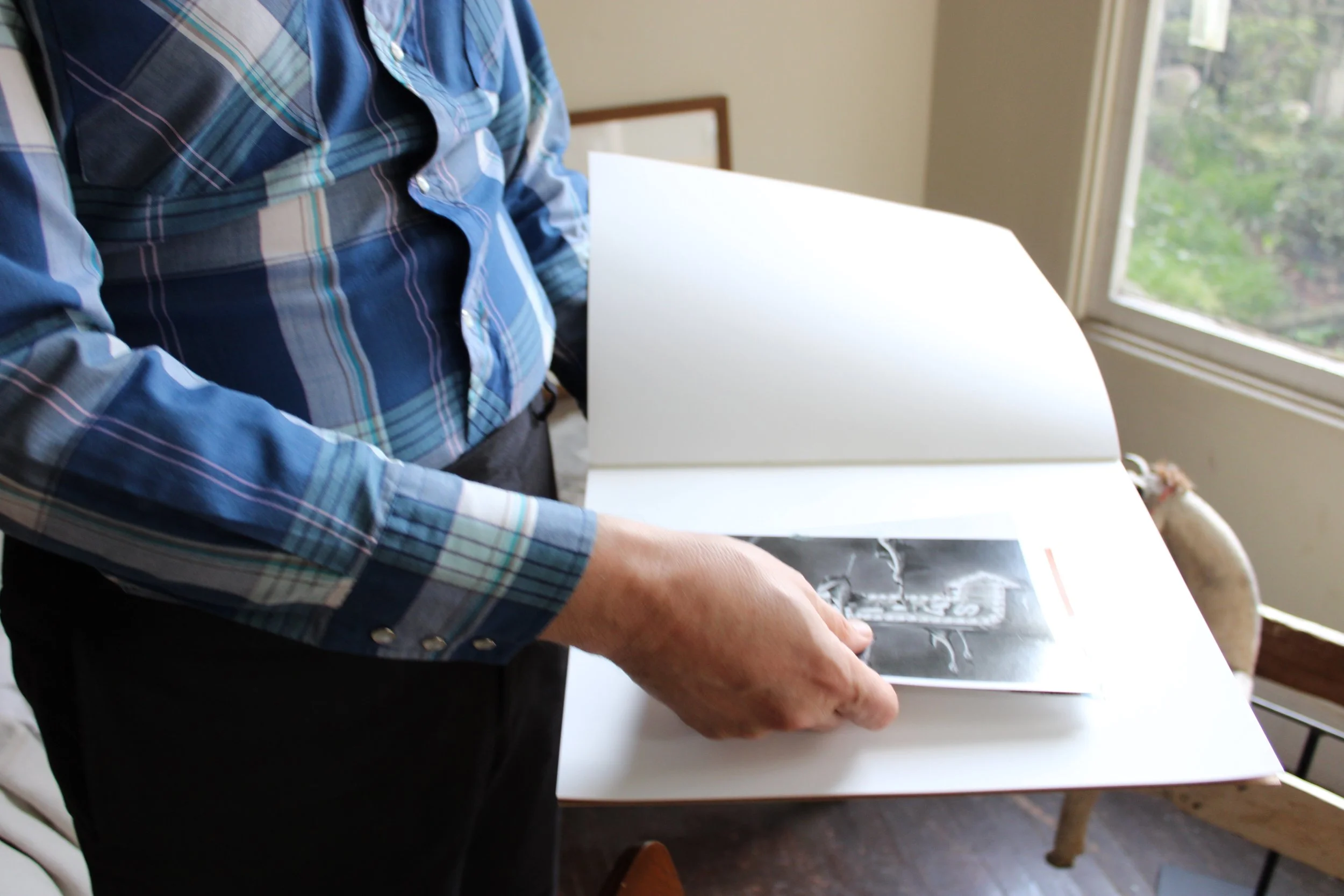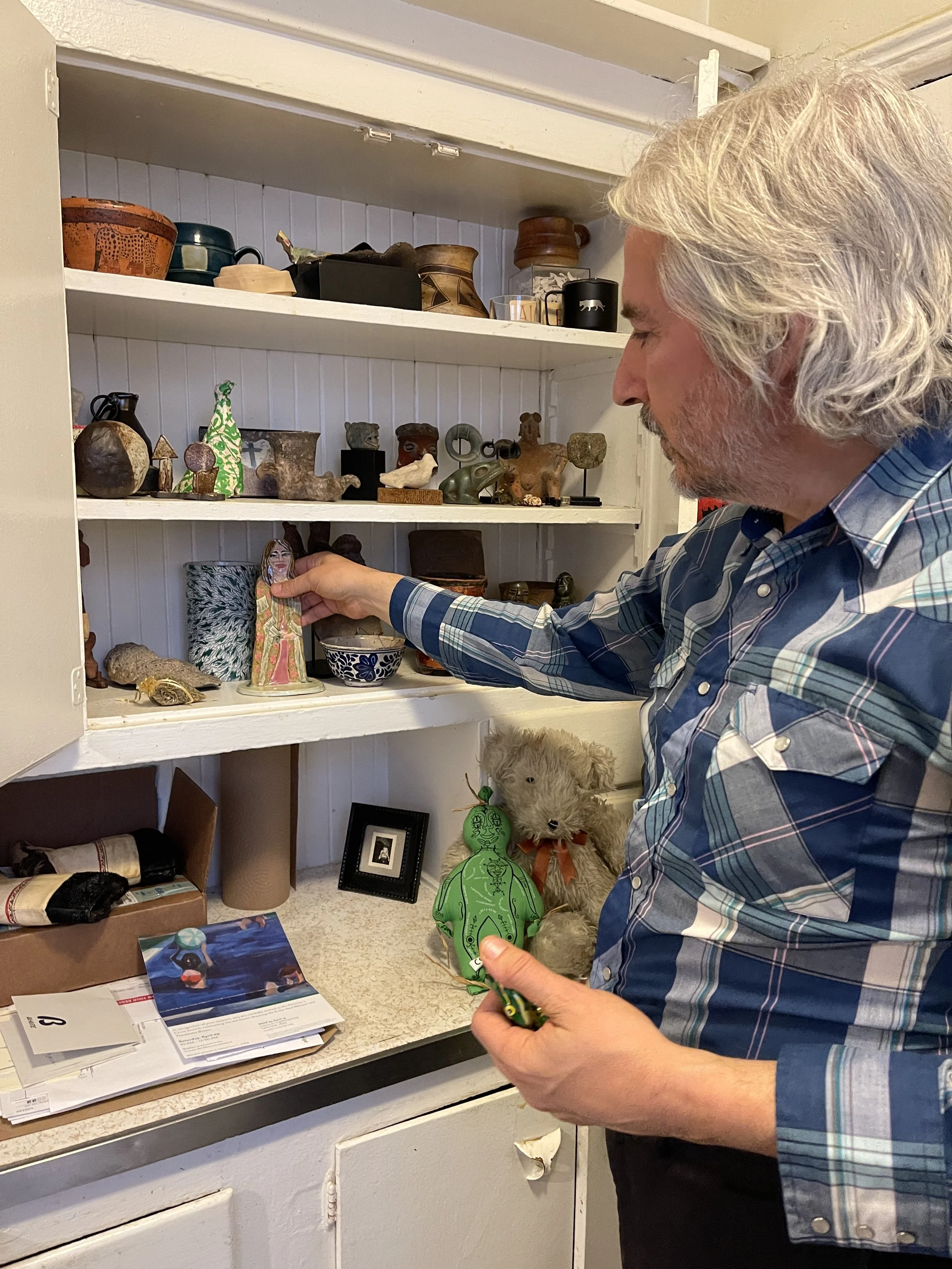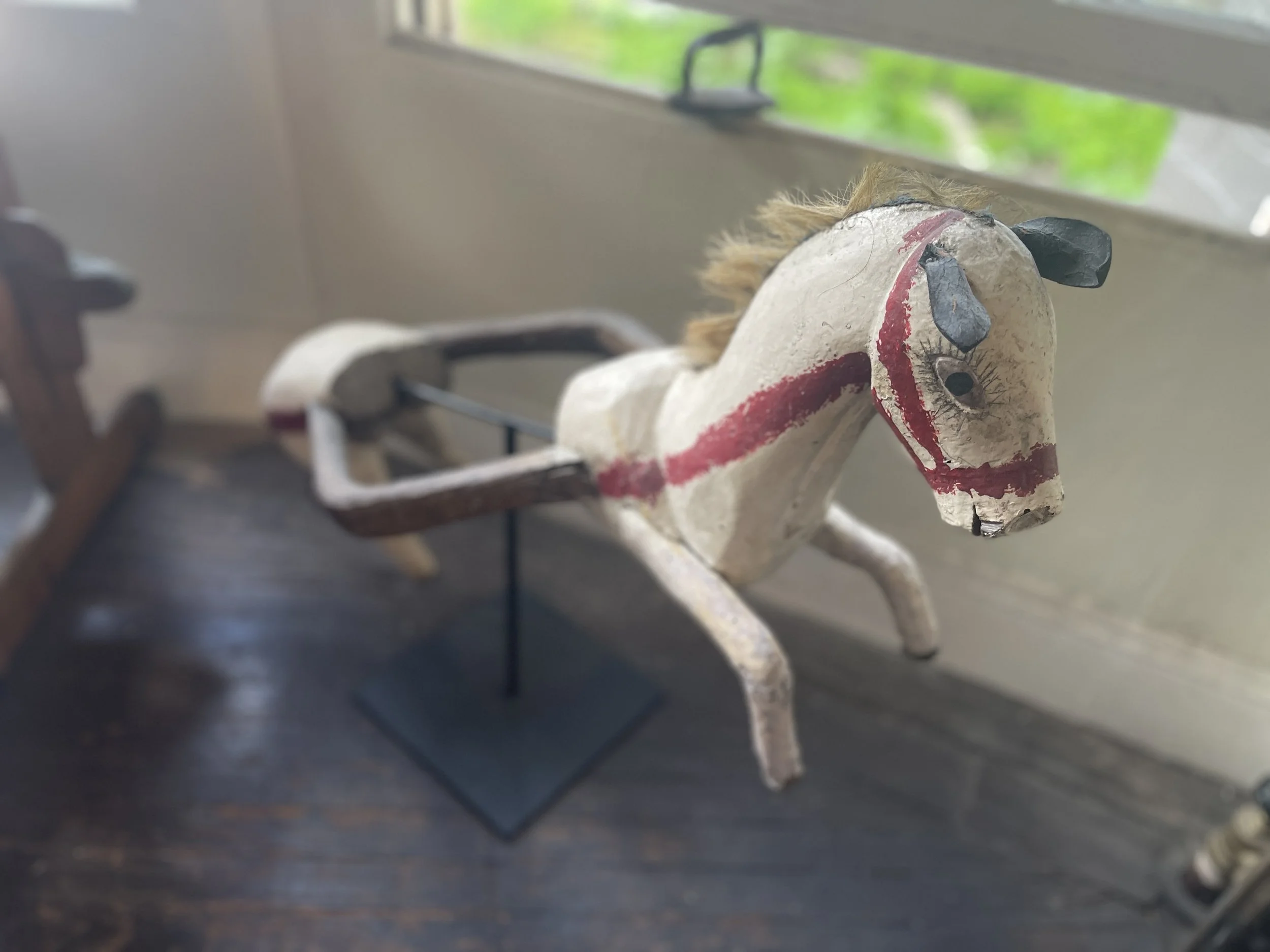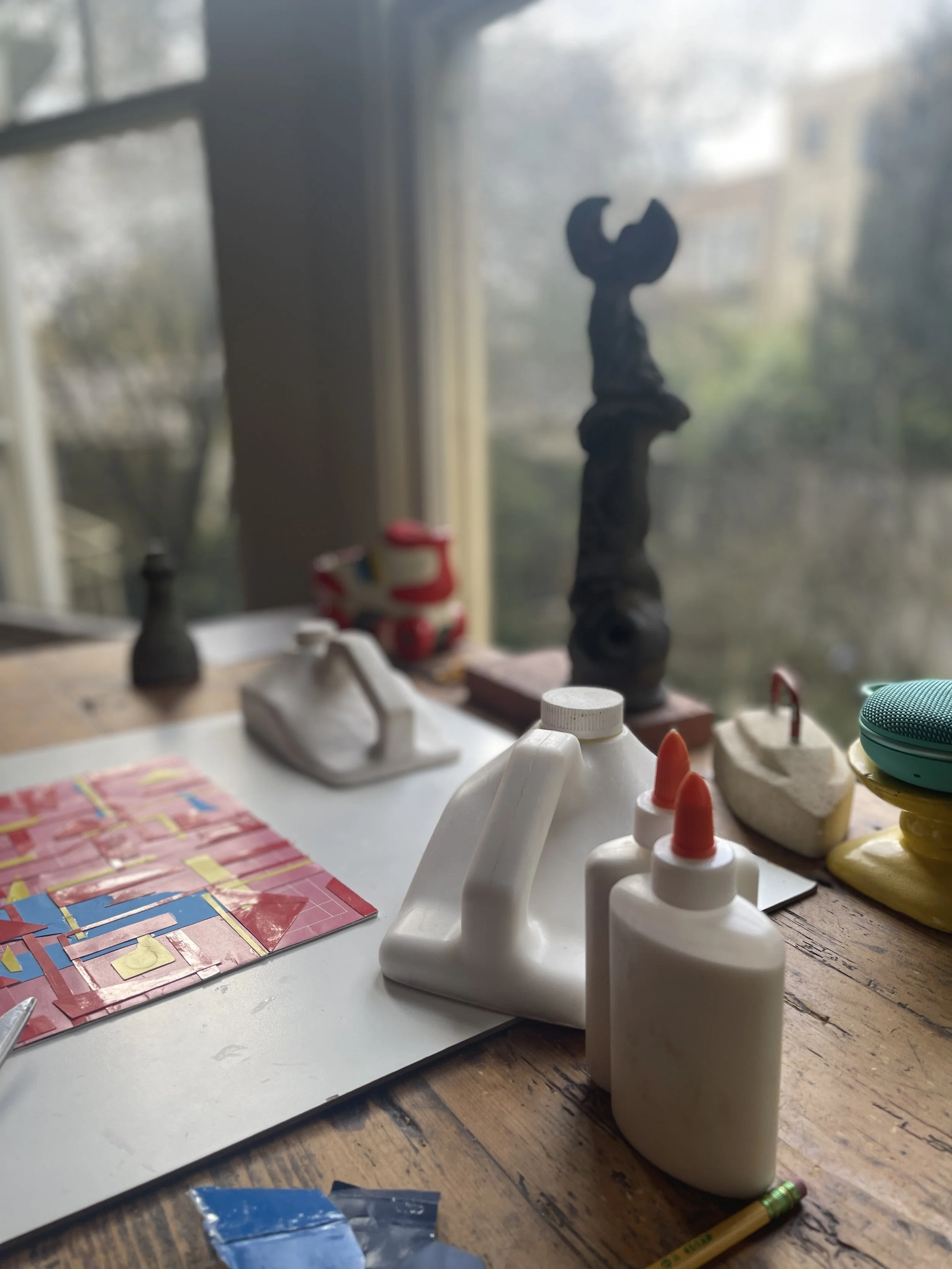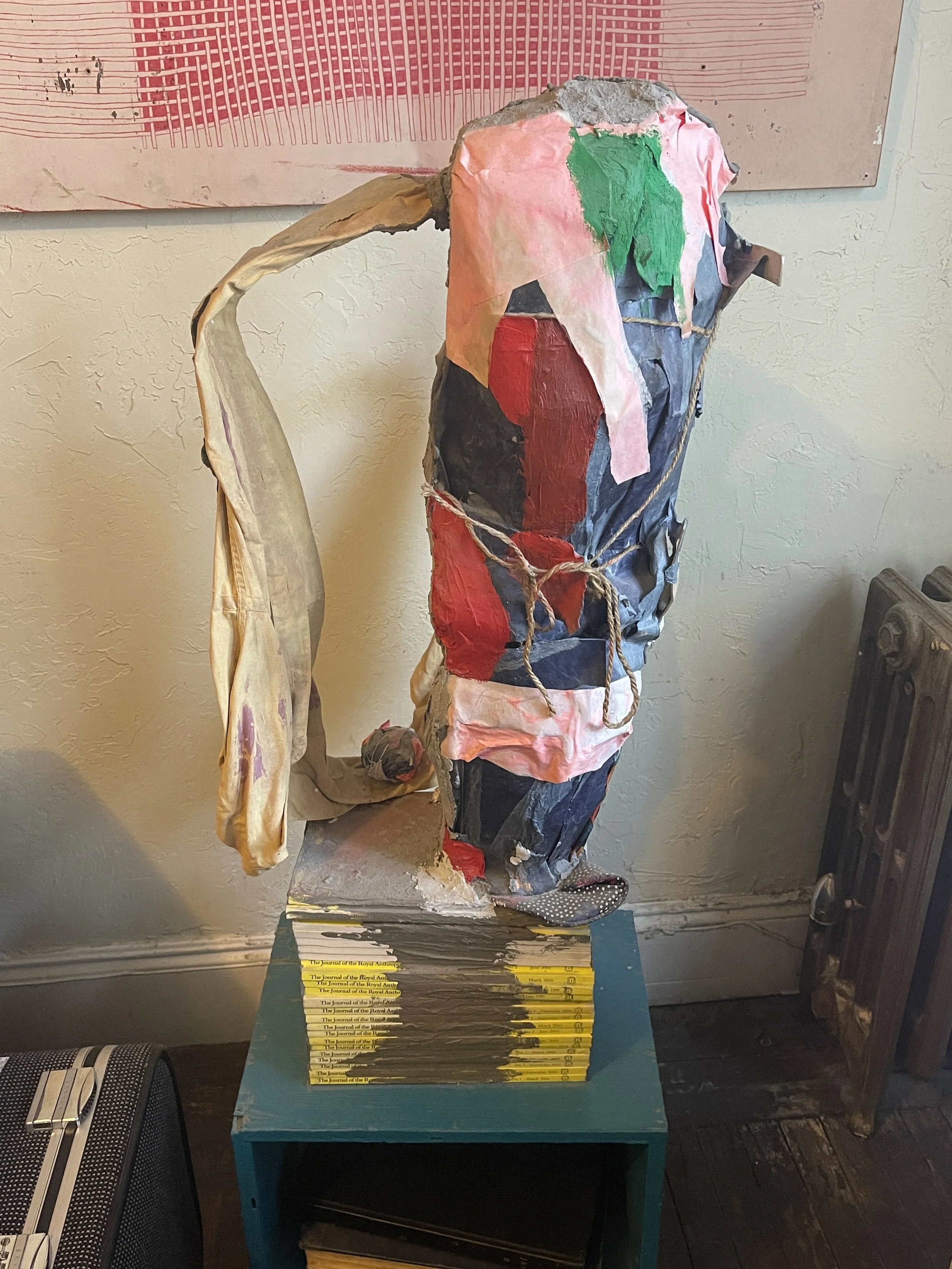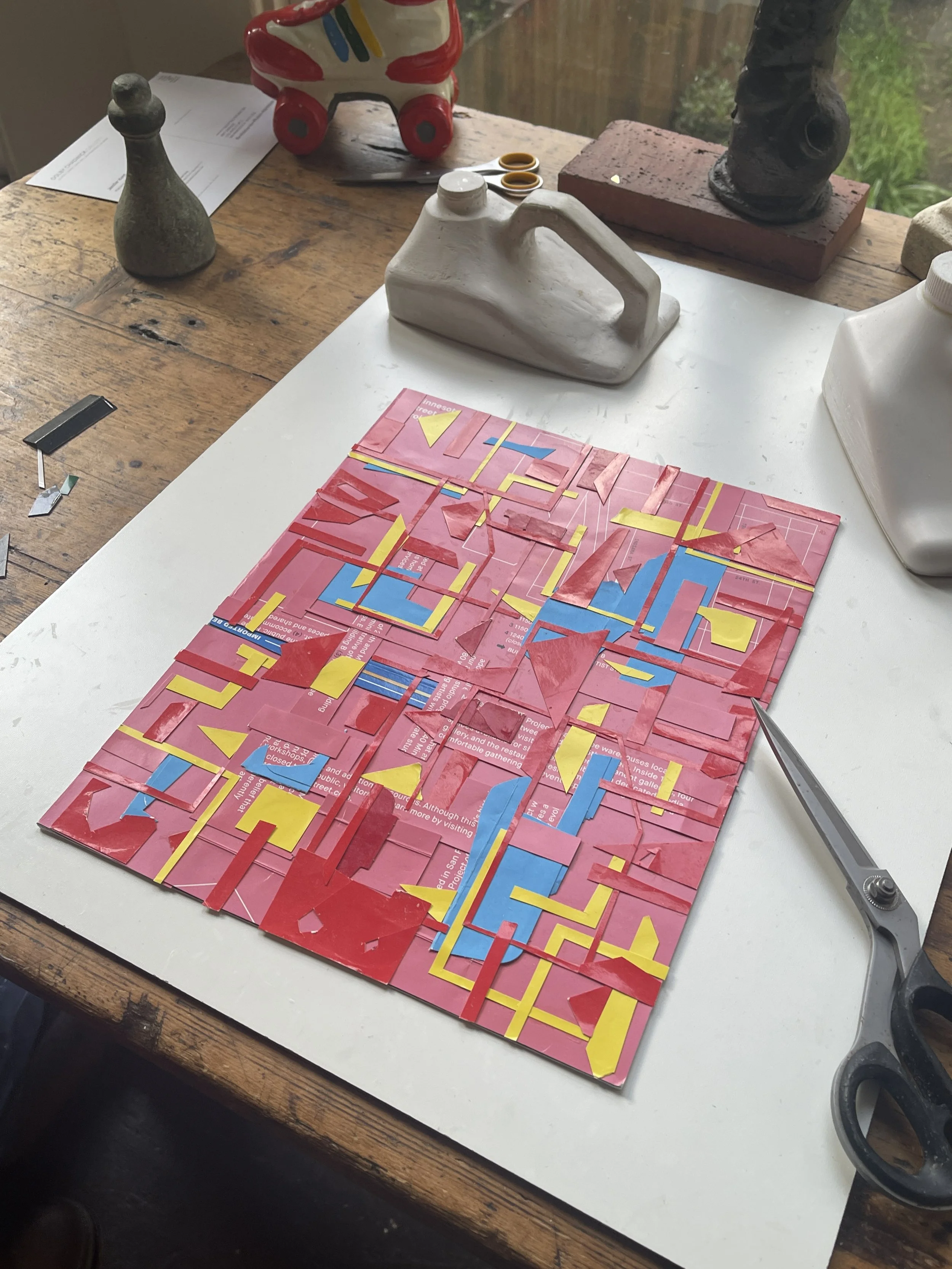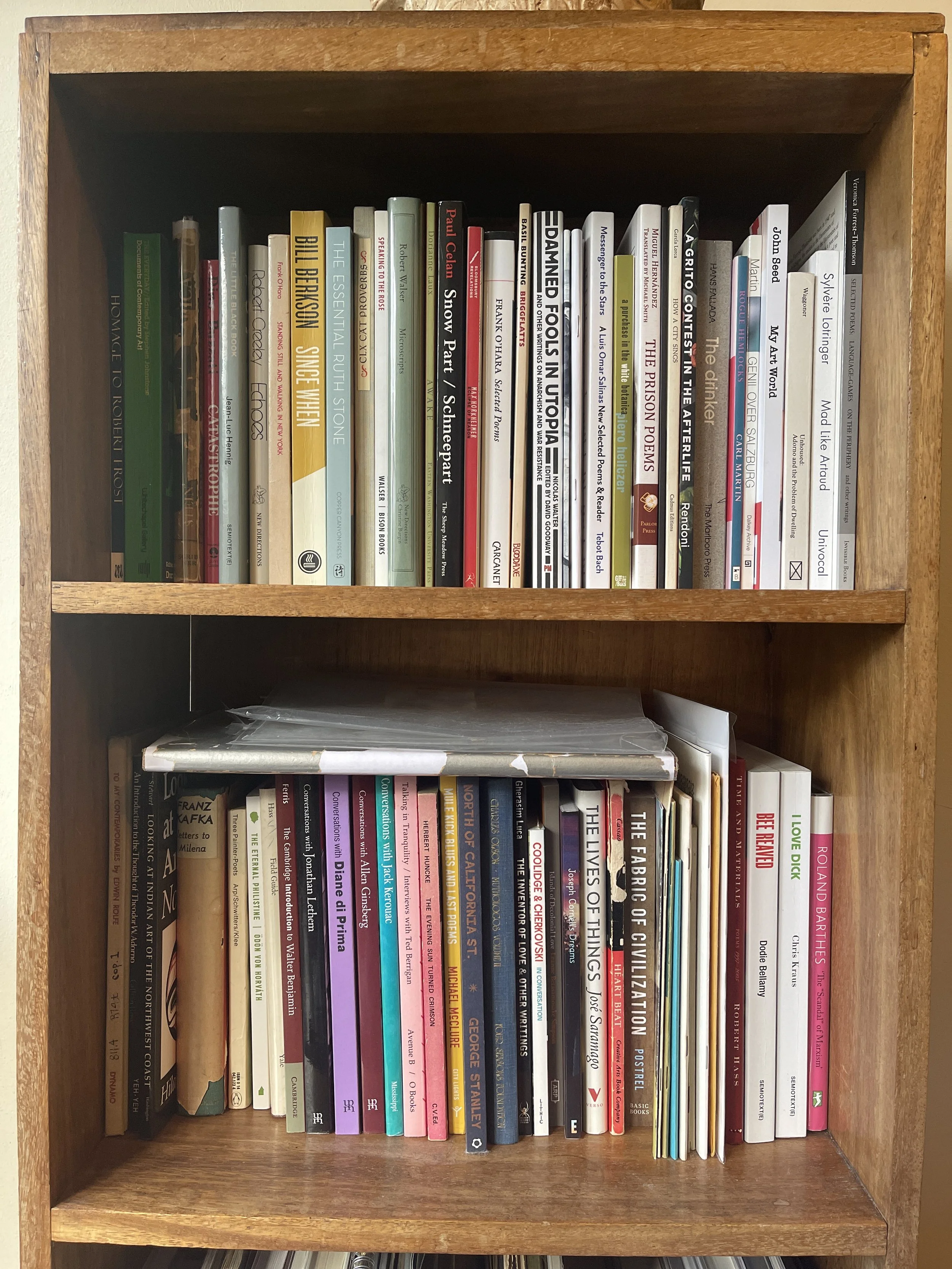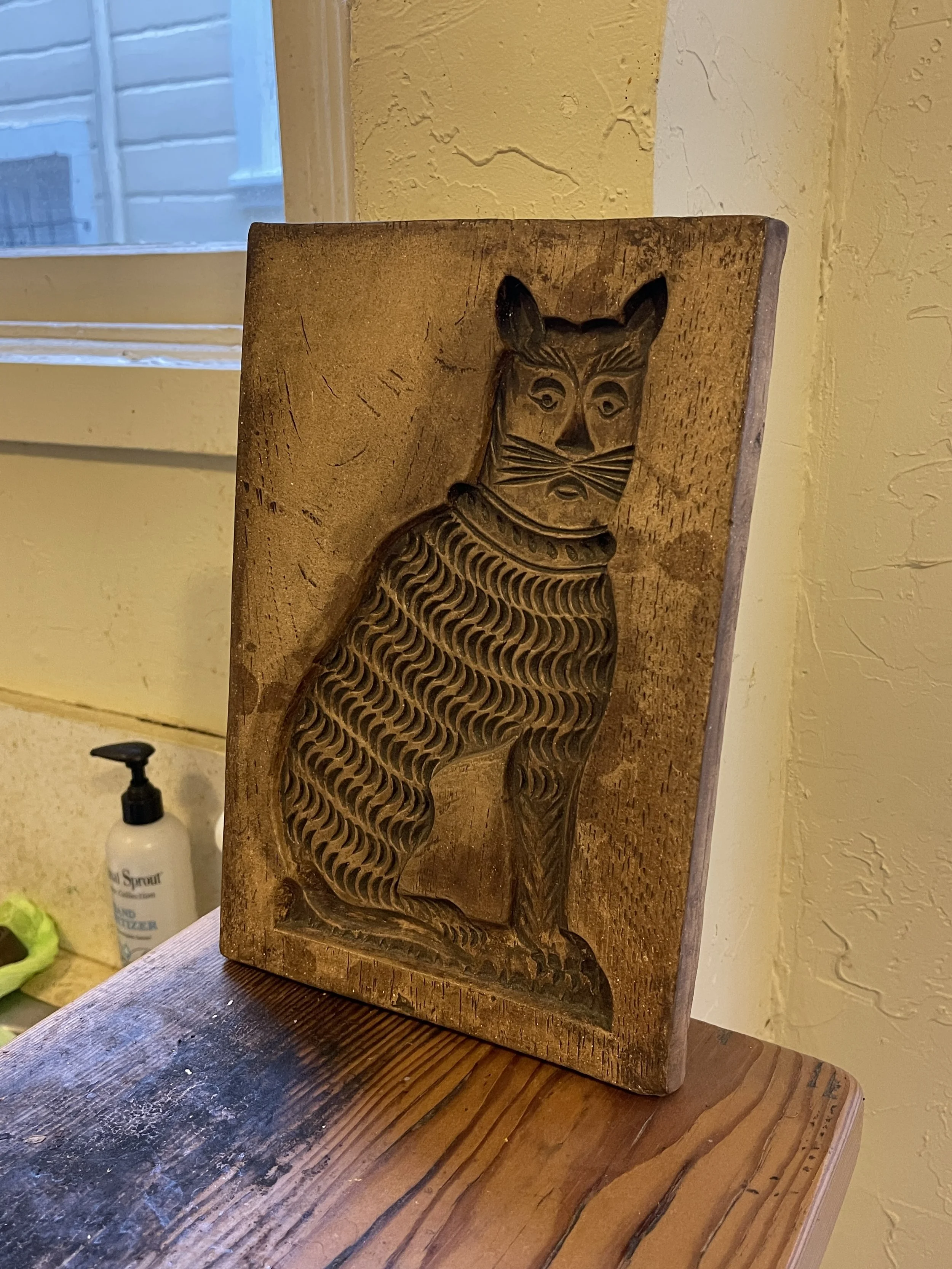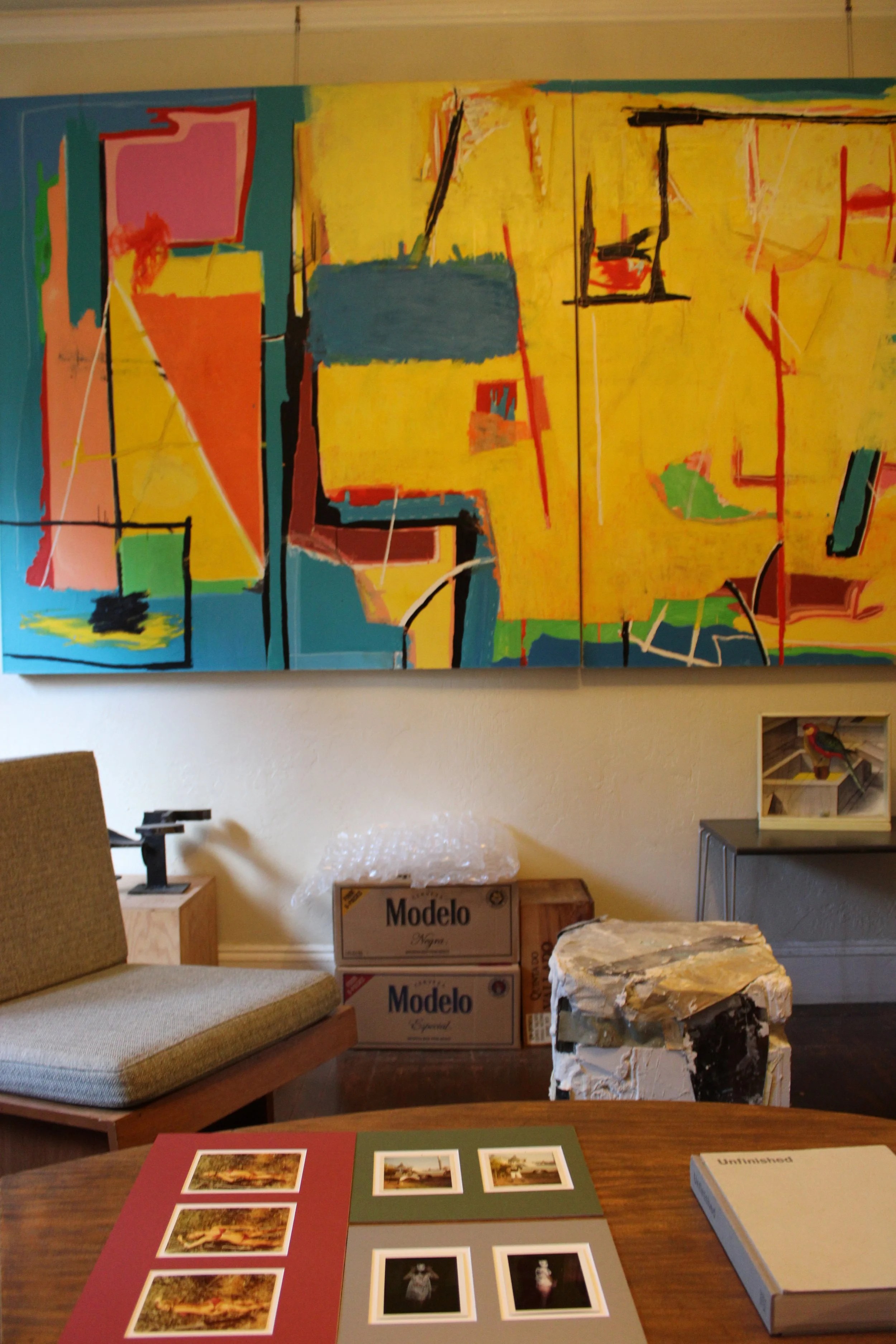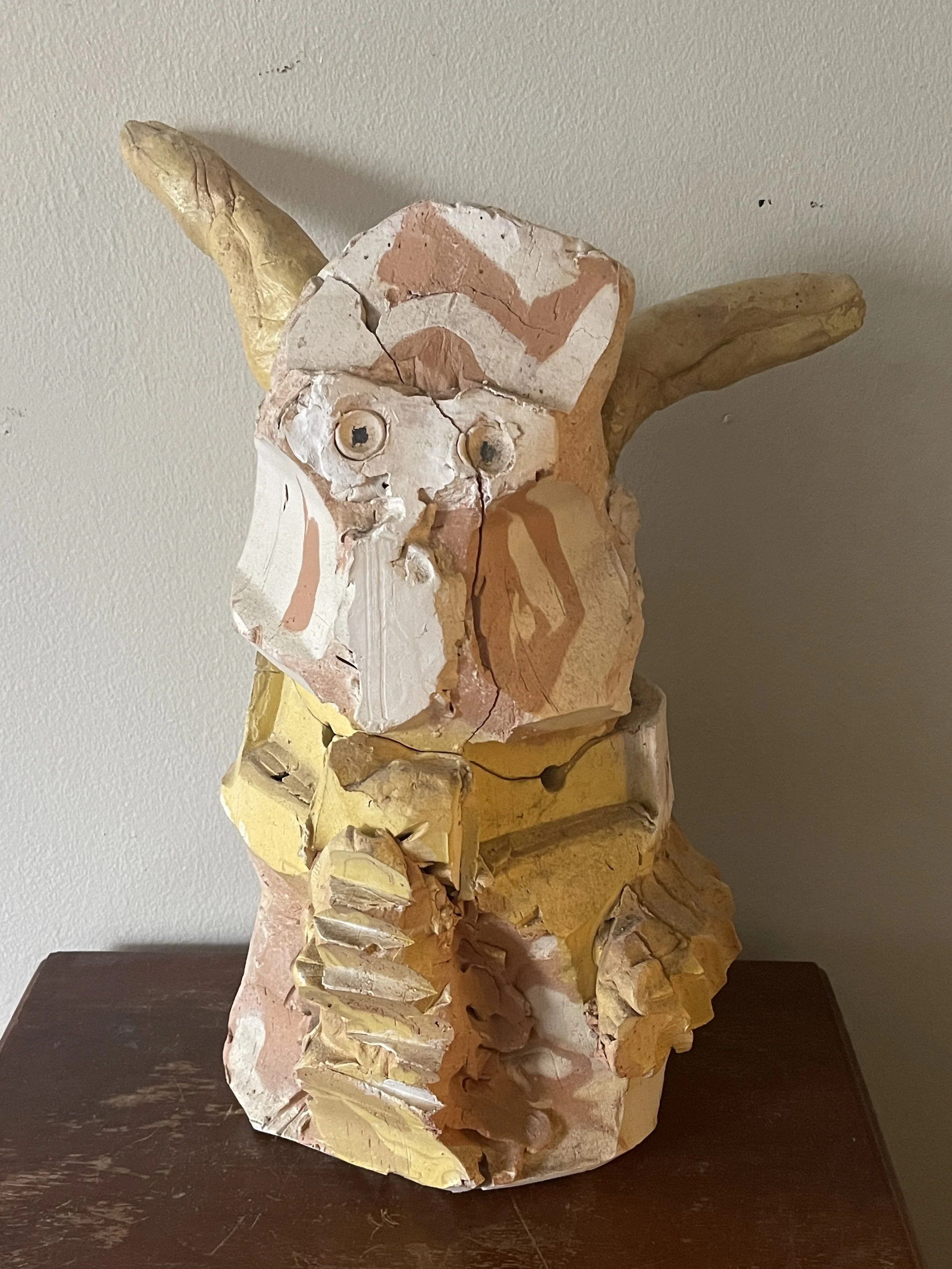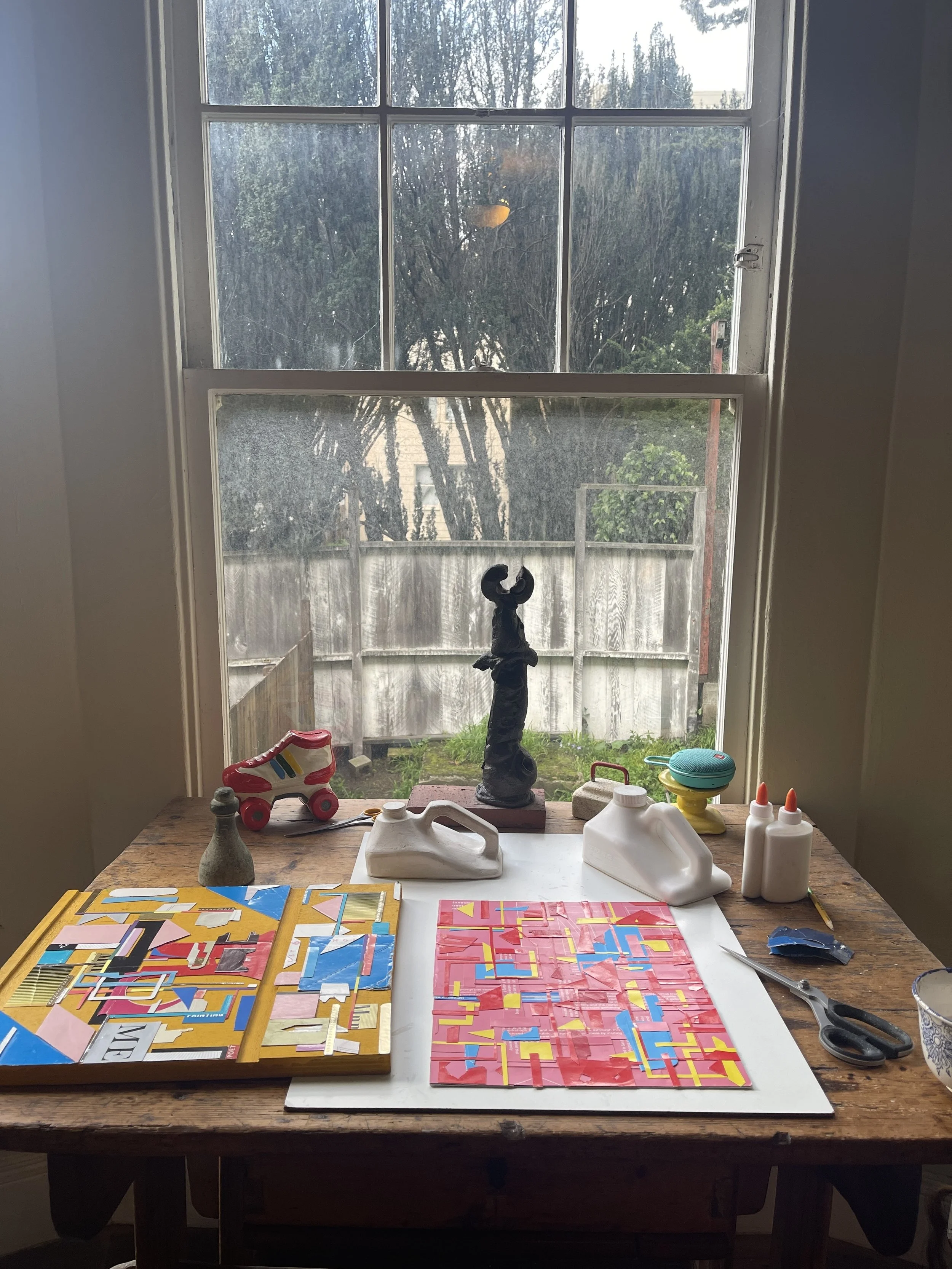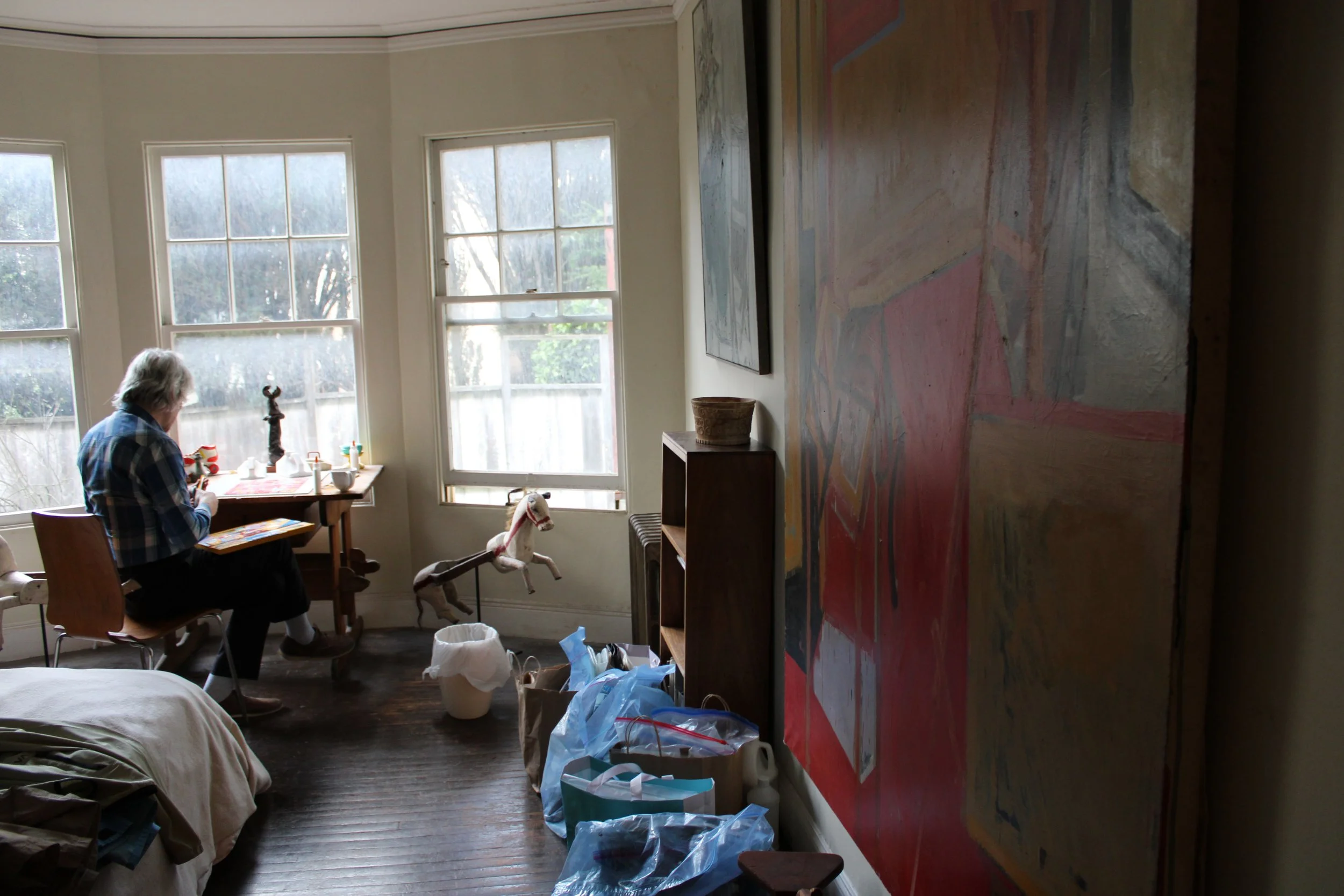Studio Visit & Interview with Matt Gonzalez
By John Vochatzer
If you live in San Francisco, the chances are that Matt Gonzalez needs little to no introduction. Professionally, he’s the chief attorney at the SF Public Defender’s Office, former president of the SF Board of Supervisors, former mayoral candidate, and running mate of Ralph Nader in the 2008 presidential race. These achievements however are only the tip of the iceberg in his 30 years of involvement, activism, and service in both local and national politics. Somehow on top of all of this Matt also manages to balance being a prolific artist, an avid supporter of the arts, and even an amateur art critic and historian who’s written over 50 articles which can be explored on his website The Matt Gonzalez Reader.
In conjunction with our upcoming group exhibit “Dearly Discarded, Volume 2” I had the pleasure of visiting Matt’s home and studio recently to learn more about his work and his creative process. Represented by veteran SF gallery Dolby Chadwick, Matt is perhaps best well known as an artist for his complex and heavily layered collages all made with discarded paper and cardboard collected from the streets of San Francisco. Additionally he has an ongoing series of found photo pairings, a few of which we are honored to be including in our exhibit. These ruminative and nostalgic 2-3 photo sets, found anywhere from flea markets to abandoned on street corners, have given a second life to these otherwise unwanted artifacts by elevating them as art on both gallery walls and in publications. Learning about these photo pairings not only taught me a lot about Matt as an artist, but also greatly informed my perspectives on found art and the concepts and intentions behind it.
“Casper The Ghost” Found Photo Pairing, and part of the exhibit “Dearly Discarded, Volume 2.”
Perhaps the most memorable part of my visit to Matt’s home and studio however was the amount and the caliber of art of which he surrounds himself with. His otherwise modest apartment in the Western Addition is brimming with paintings and sculptures, art books, and even objects of the found variety that at one point may have not even been considered or commonly looked at as art. His tastes in collecting are eclectic, ranging from Mexican folk art, to work from the Bay Area Figurative Movement, to the younger emerging artists he calls friends, but one thing is evident—Matt is an individual who delves into and appreciates art at a higher frequency than most.
Interview
Hey Matt! Thanks for making the time to let me come check out your lovely home and studio. For those who don’t know you, can you give us a quick introduction about who you are and the art that you do?
Thanks for your interest, it was fun playing host.
Let’s see, I make collage work with found paper. It’s something I’ve been doing seriously for the past two decades. About ten years ago I started exhibiting with Dolby Chadwick Gallery here in San Francisco.
I also collect what is often referred to as found photography, or vernacular photography. Basically that just means vintage snapshot photos that were never meant to be fine art. Family photos mostly that have been dispersed because the particular owner isn’t alive or perhaps the photos aren’t valued anymore. They pop up for sale at flea markets, book stores, online shops, and I’ve even found them discarded on the street. When I exhibit them I usually try to pair them; either put together two photos that come from different sources or put together two photos from the same session or moment. There’s something about seeing these vintage pictures, particularly two of them, that intrigues the eye. The color, the compositional choices, sometimes even accidental ones, I just love making art out of something that wasn’t intended to be so; plus I really like the idea of salvaging something that isn’t wanted anymore.
Your collages are known for their busy and dynamic compositions—how would you describe your process in making a collage? And how much of the process is intuitive versus planned?
Well, I would say it certainly starts out quite intuitively. I begin laying a foundation of found paper, often with monochromatic colors, then work in response to that first layer of what I think is a lot of chance and arbitrariness. Later, it’s as if I have a problem to solve. I’m working abstractly, and I respond to shadows and sculptural elements in the build up of paper. So, yeah, I would say it’s intuitive as I navigate what I feel from the materials and composition. It’s also planned, when you consider the type of paper I use, primarily medium thickness (not cardboard and not thin magazine pages), and the color sorting I delve into beforehand. And I suppose I favor an architectural form and respond to patterns that start to emerge unconsciously.
One of the most unique aspects of your collage work is the process of collecting the material directly from the streets of San Francisco. Do you think this part of your process has affected the way that you view and navigate the city? And if so, how?
Oh for sure. There’s a lot of candy wrappers and beer packaging South of Market and in the Haight. Wonderful gold in Chinatown. I’ve had good luck finding silver in Potrero Hill.
I don’t typically buy paper, but I have been known to pick out a brand of toothpaste or garbage bags and light bulbs because I like the particular packaging color. The latter (garbage bags / light bulbs) is where I get good yellow. I also love Modelo blue, I find that in my own neighborhood (the Western Addition) pretty easily.
“The last to speak her name, hopscotch” Found Paper Collage, 2020. Via Dolby Chadwick Gallery.
As a collagist myself, I’ve always thought one of the more defining qualities of the medium is that the artist is always at the mercy of the materials available, more so than in other mediums. I’d think this is especially the case when working exclusively with found or discarded material. What are your thoughts on this? And do you enjoy the challenges imposed by limitation?
I certainly agree. Although now I would say it’s primarily about my color palette. In the past I might make a single collage with the materials I picked up that day as I drifted around on a walk. In those cases the piece would sometimes show the dearth of materials I might have to work with. Now I collect paper and wait till I have enough of a particular pigment, before I start. So, I don’t typically run into impositions of the sort you’re referring to. I do still have the challenge that I can’t mix my colors, meaning I can’t make a color I can’t find.
I really enjoyed learning about your found photo pairings, and it gave me a lot of new perspective on the concept of found art. Can you tell us a little bit about how this series of your work first came about?
I think I bought my first found photo at a bookstore in Hayes Valley or the Mission. Then I would encounter them at the Alemany Flea Market. There’s just something wonderful about these moments in people’s lives that triggers a nostalgia in our own lives, because they’re basically trying to do what we all do, just live; celebrating this or that. I became aware of some great collectors of these vintage photos. I’m thinking specifically of collectors Robert E. Jackson and Robert Flynn Johnson. I wanted to do something, but just exhibiting single photographs didn’t seem interesting enough. I mean, it is compelling, but I somehow gravitated to pairing them. Somehow it excites the eye because there’s so much to look at, and the process of having your gaze dart back and forth keeps it really intriguing for the viewer.
“Young woman in bikini” Found Photo Pairing, and part of the exhibit “Dearly Discarded, Volume 2.”
It was also very interesting hearing you talk about the parallels between your art, and your work as a criminal defense lawyer—and this notion of both people and things being given a second life or a second chance. Can you elaborate on this idea a little bit for us?
Yes, well, as you know I work as a lawyer in the public defender office representing people who can’t afford an attorney. That’s my day job, so to speak. Although I don’t think it’s intentional, there is a relatedness between the law I practice and art I make, a connection related to second chances. Both are about reaching a hand in and trying to stop what looks like giving up on something. In the law, it’s saving someone from a prison sentence, with art it’s keeping paper or family photos out of trash bins.
Does your work as a lawyer and an activist inform or relate to your art practice in any other ways?
I think, and this is a bit more complicated, but I made work for sometime, and still do occasionally, where I kept letters in the artwork. I didn’t always just work with color but reconfigured language and letters I found on the packaging. If you’re familiar with the Russian Futurists, it’s kind of like what they did with zaum poetry. They believed fragments of words and even just syllables had meanings and you could write poetry, seemingly nonsensical, that triggered meaning and had reference points that were somehow intelligible. I think we each do this intuitively and it speaks to what it means to be human.
In a way, this is all to say, that the collage work that recasts lettering and words has an element of cognitive liberty about it. In the way the 20th century was preoccupied with personal liberty, such as being free from search and seizure, or having free speech rights, the current century we’re in is all about technological advances which poses questions about privacy and what kinds of messaging we can subliminally be bombarded with. Both explicit advertising, which is everywhere, and hidden messaging which we’re still learning about, and which we’re realizing is ubiquitous, are realities we’ve never had to contend with in their present scope. So by cutting up some of the language of advertising, which is what you get on packaging, right, they are trying to sell you the product inside the box, they want you to pick that item. So by obliterating their messaging in this small way, and reconfiguring the language of sales and capitalism, I make my own language or visual imagery out of the letters. It’s a small commentary to stand as liberated reminders of the battle over forced ideas.
On top of being an artist, you are also quite the art collector and there’s art everywhere in your home including in the kitchen cupboards. How does the art you surround yourself with affect or influence you both as an artist and in your everyday life?
Well, I think that living with art enriches the lived experience. It sparks a different kind of contemplation and serenity. Even the smaller pieces in my cupboard, well first off, they actually get seen, but they also interact with other mundane things. It’s all art, if you think of art as your relationship to a thing or idea. It’s about context, so putting something in a place that makes you interact with it differently is a part of that.
As you saw, I have sculptural works I have to walk around in my living space. Pyramid sculptures by Andrew Schoultz, which were part of an installation he made, pieces by Ryan Wallace, Kyle Ranson, Sahar Koury, plus some Mexican folk art works. So yeah, I guess it's everywhere, but I think I have it right and mostly everyone else is missing out.
As someone who very clearly appreciates art, what would you say is the importance of collecting art and having art in one’s home? And what would you say to folks who may be on the fence about beginning to collect art?
I think that when you live in a space with art, the art operates as a facilitator to imagination. They’re portals into discovery and contemplation. A starting place. They also retain some of the aura of the process of making it. I can imagine the artist in my living space attacking the canvas with brushes or working with tools to make a piece of sculpture. It populates the living space by bringing those moments and experiences into my space. Plus, I’d much rather think of all my friends who are represented on the walls or in the space, than not.
You are also an avid writer and investigator of the art world. Can you tell us a little bit about The Matt Gonzalez Reader and your own journalistic endeavors? What pockets of the art world are you most interested in exploring these days?
The Matt Gonzalez Reader is a website where I collect all the things I’ve written in one place; I’ve written over 50 art reviews that are available there, a couple of which are quite long.
There’s a long biography of West Coast realist painter Guy Diehl and also a history of a group of painters, who called themselves the Firehaus Group, who were active in Stockton, California during the late 50s and early 60s. Both of those essays are over 15,000 words each.
I am not a professional writer, although I have been paid to write catalog essays, but I don’t profess to be a pro. Something about the amateur label appeals to me, I guess. But I have enjoyed the challenge of writing about artists I don’t understand. It forces me to delve deeper. And if I do like the art work I’m writing about right off the bat, I still have to actually say something. “Oh yeah I like this,” or “cool,” “great show”; none of these really cut it in criticism. So I like forcing myself to actually say something meaningful.
My approach isn’t meant to be the end all. It’s just one way of approaching the work, so I don’t worry about whether the artist agrees with me or what anyone else says about the work. It’s my opinion, so I get to voice it however I like.
Who are some contemporary artists in the Bay Area right now that you are excited about? Anybody that we should be keeping an eye on?
There are so many exciting artists in different styles who are active in the Bay Area right now. Honestly, I love Emilio Villalba’s new paintings, they have a David Park and German Expressionist quality to them. I have been watching him closely for years; he’s got a solo exhibition at Dolby Chadwick coming up in June which should not be missed.
I’ve seen a bunch of recent shows that stand out. Johanna St. Clair just had a show at Gallery 16, beautiful colorful paintings in her own impressionist plein air style. Gianluca Franzese recently exhibited works at Upper Market Gallery made with metallic elements, such as gold leaf; they’re compelling geometric abstractions influenced by patterns in nature. Lauren D’Amato has an exhibit at House of Seiko right now, I think it’s still up, featuring works influenced by sign painting and letterforms. Alexis Yonan just showed ceramics at the Worth Ryder Gallery at UC Berkeley recently, I saw the work via images on social media, but was impressed. So yeah, I just feel like there’s a really active scene with all kinds of talent.
I went by Peter Kirkeby’s studio on the waterfront last week, do you know his work? He has been making some beautiful minimalist colorful abstract paintings based on nautical flags and the horizon line. He alternates working both with gouache and paint. The restraint and simplicity of his process masks how sophisticated they are.
I could go on and on.
Something that has been in discussion a lot lately is the state of San Francisco as an “artist’s city” after so many changes in the past ten years and then followed by the pandemic. As someone very close to San Francisco, and who has become a large part of the city’s fabric over the past 3 decades—how do you feel about the current state of San Francisco as a city for artists and creatives?
The art scene is alive and well here. I’m sure it’s great in Los Angeles too, where many San Francisco artists seem to go at some point. But don’t let anyone tell you it isn’t happening here. Particularly when you include the East Bay. I really like what I’m seeing at Pt.2 Gallery, Johansson Projects, Eleanor Harwood Gallery, Hashimoto Contemporary, Romer Young, Park Life, again I could go on and on. The city also has these great incubators for artists like Moth Belly, and Incline Gallery, and Upper Market Gallery is super active now. I’m not even mentioning some of the more established galleries, which is all to say, the state of art in San Francisco is strong. These galleries are consistently showing good work which stand up against anything out there.
